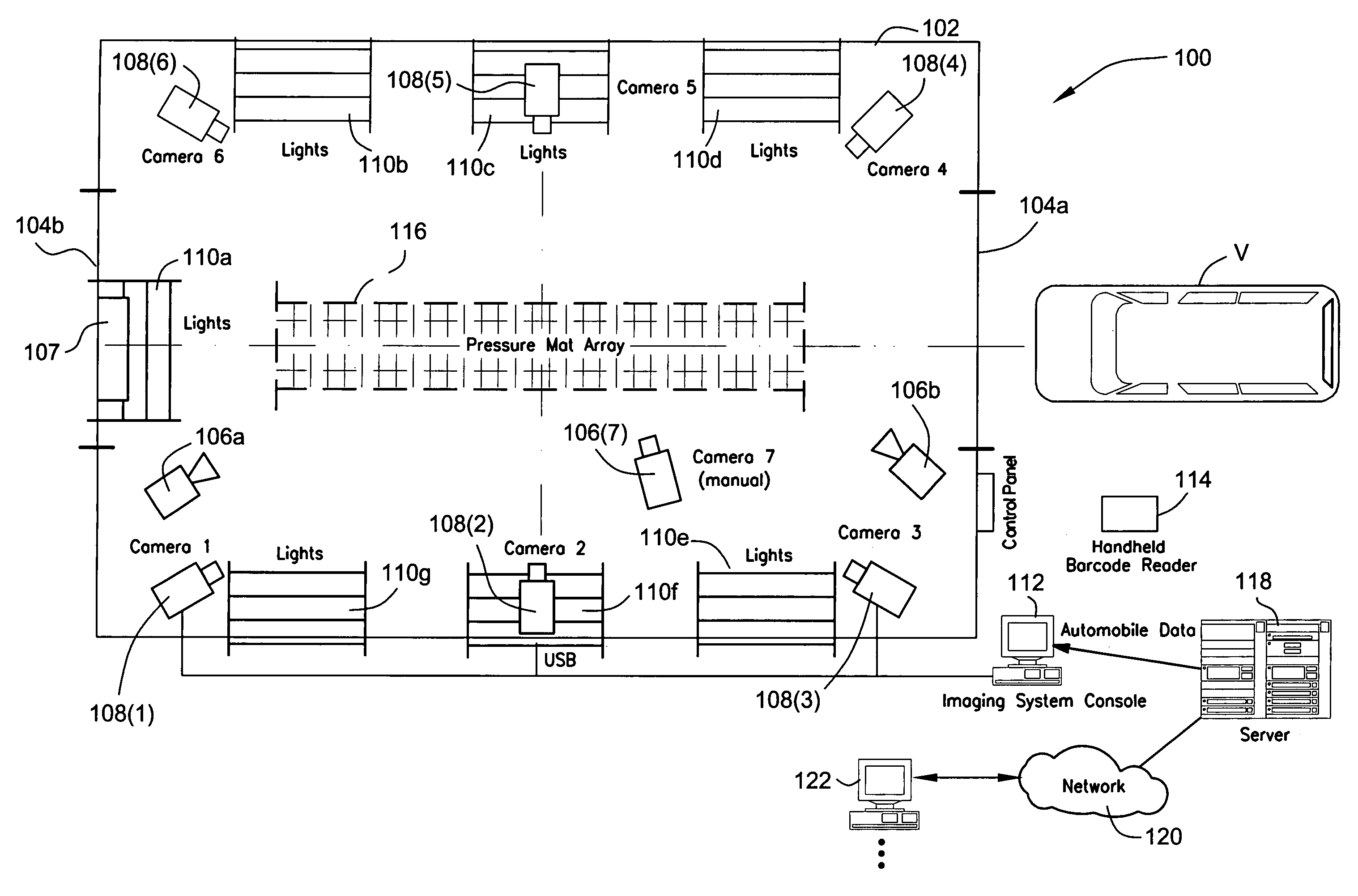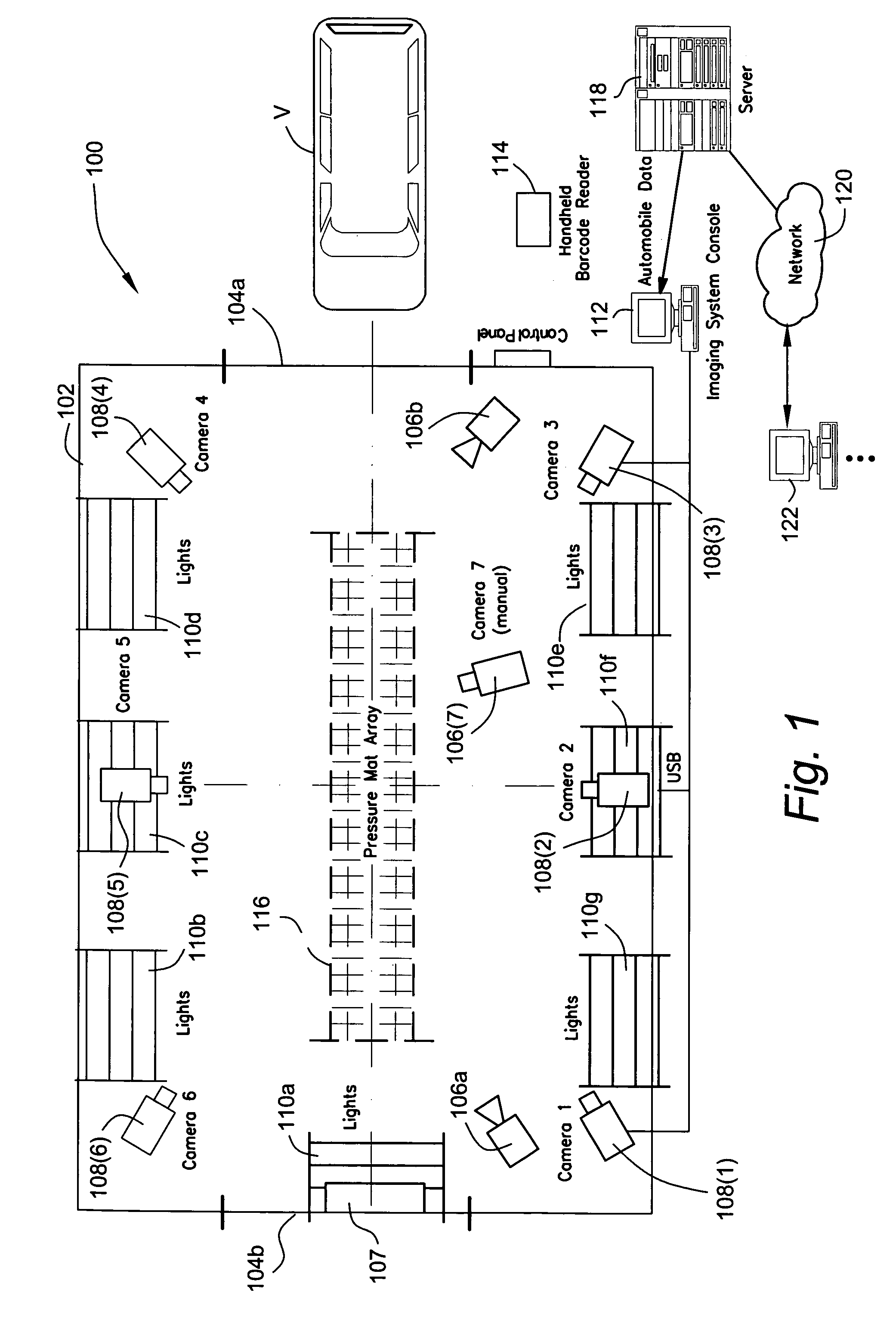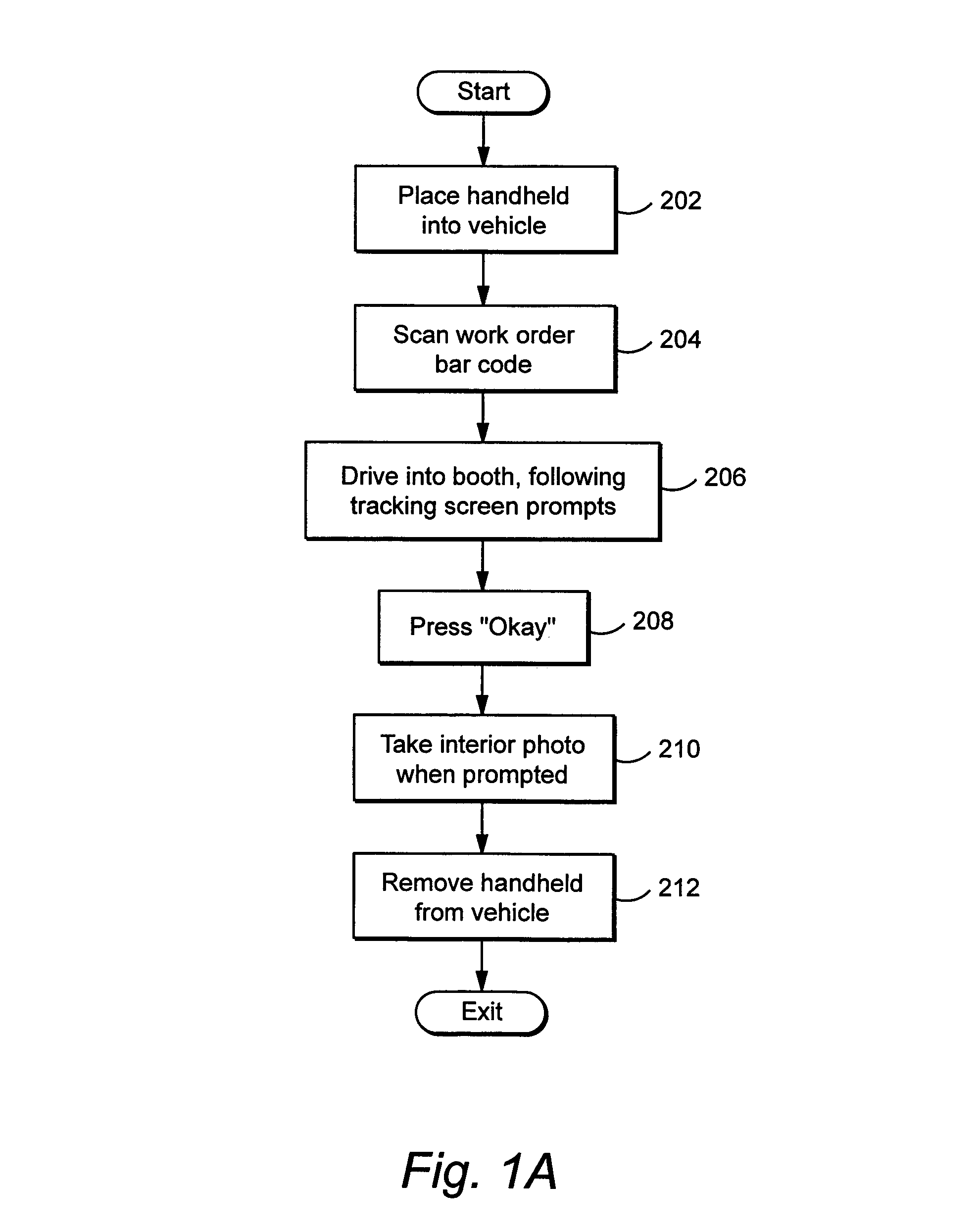Method and apparatus for automatically capturing multiple images of motor vehicles and other items for sale or auction
a technology of automatic capture and motor vehicles, applied in the field of automatic computer controlled image capture, can solve the problems of high cost, high processing cost, and inability to accurately capture detailed condition reports, and achieve the effect of maximizing resale valu
- Summary
- Abstract
- Description
- Claims
- Application Information
AI Technical Summary
Benefits of technology
Problems solved by technology
Method used
Image
Examples
Embodiment Construction
[0038]FIG. 1 is a schematic diagram of an exemplary illustrative non-limiting vehicle photo booth system 100. System 100 includes an enclosure 102 large enough to house a vehicle V or other object to be photographed and documented, and also houses equipment used to perform this photographing / documenting function. In one illustrative exemplary non-limiting implementation, enclosure 102 may comprise for example a 30′×30′ enclosed building. Automatic motor-controlled roll-down doors 104a, 104b are located at opposite ends of the building. Enclosure 102 protects the photographing / documenting equipment, and also provides a controlled background and lighting environment that uses artificial lighting to illuminate the vehicle V being photographed / documented while shielding the vehicle from outside objects and ambient light during the photographing / documenting process. In one exemplary illustrative non-limiting implementation, the interior of enclosure 102 is painted a uniformly drab neutra...
PUM
 Login to View More
Login to View More Abstract
Description
Claims
Application Information
 Login to View More
Login to View More - R&D
- Intellectual Property
- Life Sciences
- Materials
- Tech Scout
- Unparalleled Data Quality
- Higher Quality Content
- 60% Fewer Hallucinations
Browse by: Latest US Patents, China's latest patents, Technical Efficacy Thesaurus, Application Domain, Technology Topic, Popular Technical Reports.
© 2025 PatSnap. All rights reserved.Legal|Privacy policy|Modern Slavery Act Transparency Statement|Sitemap|About US| Contact US: help@patsnap.com



